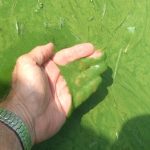Places
We put a great deal of emphasis on the “where” in our lives. We worry a lot about where we live, where we work, and where we travel. Home is most important to most people. It is where you spend all of your time, and it is the place closest to your heart. Facts Verse: The Strange Story Of Miami’s Past Proves It Might Be The American Promised Land.
Strange Story Of Miami
Miami is known for two things. First, it is a place where millions of college on spring break go to let loose and get crazy. It is also a popular retirement spot for the elderly. Some people call it “God’s waiting room,” but the people who retire there call it home. Miami is a popular destination spot, and we have Julia Tuttle, aka the Mother of Miami, to thank.
Julia Tuttle
Julia Tuttle first traveled to Biscayne Bay, which is now known as Miami, back in 1875. She grew up in Cleveland, Ohio, and lived there most of her life. When she saw how beautiful Southern Florida was, she was instantly smitten. She didn’t head for Biscayne Bay looking for a paradise to call home. She went there for the second and final time in 1891 to inherit her father’s 40-acre orange grove after his death. Julia was already a widow, and he left her a failing iron foundry and a mountain of debt.
Dire Situation
Things weren’t going well in Cleveland for Julia and her two children. Her father’s death was devastating, but she saw it as a second chance at life. After his death, Julia decided to start over in a new place. She sold her home and the iron foundry to make enough money to move her family to Biscayne Bay to start over. She knew that there was a better life for her family, waiting.
Undeveloped Land
The area was completely undeveloped, and the land was cheap. It was selling for 25 cents per acre. Julia had never worked a day in her life, and she had a knack for business. Julia had her father’s inheritance, but she saw that as just a jumping-off point. She used the money from her parents’ estate to buy the James Egan grant of 640 acres. Julia was passionate about the land. She wanted to develop it into something incredible, but she knew if it would ever succeed as a city, she needed something.
Transportation
There were no railroads that traveled to Southern Florida. If people couldn’t get there, the area couldn’t thrive. Julia decided to try to convince railroad tycoons to build in her direction. This was the only way it had a chance of making it on the map without dedicated transportation. Fortunately, Julia had an acquaintance from Cleveland named Henry Flagler, who also happened to be in the railroad industry. She wrote him a letter, but he was sure that there was nothing in the South; therefore, he shot her down.
The Great Freeze of 1894
When the Great Freeze of 1894 hit Southern Florida, nearly all of the crops in the state were destroyed. It devastated the local economy, and farmers and landowners panicked. Julia didn’t need to panic because Biscayne Bay was unaffected. Julia cut a fresh orange blossom from her yard and put it in a box. She sent it to Henry Flagler with a note that read, “the south is our promised land. If you bring the railway, I will give the land.”
Land
Flagler saw the orange blossom and immediately agreed to Julia’s proposal. He agreed to extend the rails south, and in exchange, Julia gave him land for a station and a plot to build the Royal Palm Hotel, all free of charge.
April 22, 1896
Julia’s dreams finally came true when the Florida East Coast Railway arrived in the area. This meant that Southern Florida was officially open for business. Just three months later, the men in the area agreed to vote the small town into incorporation under the name Miami.
The Only Woman In History
Julia turned her 40-acre orange grove inheritance into a city. She is the only woman in history to have founded a United States city. As word of the mild temperatures in Florida started to spread, people took notice. A New Jersey man named John Collins took a huge risk by buying a struggling coconut grove, which is what we know today as Miami Beach. The trees were pulled up, and millions of pounds of sand were dumped to create the famous shoreline that we know today. The city grew as the people came, and today, Miami is one of the most popular vacation destinations in the U.S. Thanks Julia! Had she not seen that Miami could be more than just an orange grove, spring break, and retirement would look much different for millions of people. The strange story of Miami’s past proves it might be the American Promised Land.


